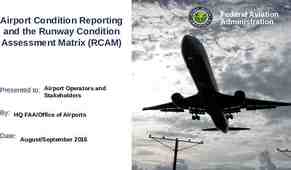Naloxone for Peace Officers and EMTs
56 Slides4.65 MB
Naloxone for Peace Officers and EMTs
Objectives ·Background statutes & ·Define naloxone ·Routes administration ·Training requirements ·Immunity of
The Opioid Problem: ·Lethal Drug overdose is the leading cause of accidental death in America ·41,502 drug overdose deaths in 2012 – 39% caused by opioids (approximately 16,186) ·Opioids include legal prescriptions and illegal drugs
Why Law Enforcement & EMTs? · Safe · Effective · Well-established practice · Few side effects · First step overdose in combating deaths – This is a time sensitive emergency – Any delay in administration can result in death from
ARS 36-2228 ·Requires a standing order issued by a licensed physician or nurse practitioner ·A trained EMT or Peace Officer may administer Naloxone (or other FDA approved opioid antagonists) ·This may be administered if the EMT or Peace Officer believes that the person is suffering from an Opioid-related overdose
ARS 36-2228: Training ·Requires uniform training module for both EMTs and Peace Offi cers ·Help providers identify persons suff ering from an opioid-related overdose ·Training on use of Naloxone and other opioid reversal drugs
ARS 36-2228: Immunity · Physicians or Nurse practitioners who issue a standing order and EMTs and Peace Offi cers who administer Naloxone pursuant to this training A RE I M M U NE F ROM C I V IL , P ROF E SS I ONA L AND CRIMINAL LIABILITY · This includes any decision made, action taken, and injury that may result from the administration ·As long as those persons acted with reasonable care and in good faith ·Exceptions are wanton or willful neglect
Key Points ·Licensed physician or Nurse practitioner approval is MANDATORY ·ADHS Approved Training is MANDATORY ·Administration of Naloxone should follow an ADHS approved protocol
What are Opioids · Opioids synthetic drugs · Opiates naturally derived from the poppy plant · Classified as depressants – Central Nervous System (CNS) or brain function – Respiratory – Cardiovascular · Why are they abused? – Euphoria (to “get high”) and pain control
How do they Kill? ·Respiratory and CNS Depression ·“Slows” everything down ·Decreases level of consciousness ·Decreases respiratory drive ·Decreases heart rate and lowers blood pressure
Decreased Respiratory Drive ·How opioids kill ·Body naturally wants to breath ·This takes it away ·Lose Consciousness -) lose drive to breath -) lack of oxygen -) further loss of consciousness -) DEATH ·All can be reversed in a timely manner
Eff ect of Opioid Overdose ·Hypoxia (Lack of oxygen) ·Aspiration (inhaling vomit) ·Cardiopulmonary arrest (“code”) ·Increased incidence when combined with alcohol, benzodiazepines (sedative,) or other medications
Opioid Medications ·Buprenorphine (Subutex) ·Codeine ·Fentanyl ·Hydrocodone (Vicodin/Norco/Lortab) ·Hydromorphone (Dilaudid) ·Methadone ·Morphine ·Oxycodone (Percocet, Oxycontin) ·Illegal Opioids heroin and opium
Routes of Opioid Administration ·Oral (pills) ·Intravenous (IV) ·Snorting ·Smoking ·Subcutaneous e.g. under the skin (“skin popping” during the abuse of opioids)
Naloxone (Narcan) ·Developed in the 1960s ·Opioid antagonist (reversal drug) ·Used as an emergent overdose treatment in the hospital and prehospital settings ·Increased need for Narcan due to: - Greater variety of available opioids - Increased opioid use and abuse
Mechanism of Action ·Naloxone displaces the opioid from the opioid receptor in the nervous system ·Temporarily reverses respiratory and CNS depression ·May result in the sudden onset of opioid withdrawal symptoms
H
Signs & Symptoms of Opioid withdrawal – Agitation – Tachycardia (rapid heart rate) – Pulmonary edema (fluid in lungs) – Nausea – Vomiting – Seizures
Naloxone Does Not Work for ·Overdoses of – Non-opioid Sedatives ·Valium ·Ativan ·Xanax ·Alcohol – Stimulants ·Cocaine ·Amphetamines
Routes of Administration of Naloxone ·EMTs & Peace Officers: – Intramuscular (IM) – Intranasal (IN) ·Paramedics, AEMTs, I99s : – – – – – Intramuscular (IM) Intranasal (IN) Intravenous (IV) Intraosseous (IO) Endotracheal (ET)
Benefi ts of Naloxone Administration by Intranasal Route or Auto-Injector · IV access may be difficult to establish in chronic IV drug abusers · Decreased risk of needle stick injury · Decreased risk of potential infectious disease exposure · Simple, rapid, convenient
Why Intranasal (IN) ·Works quickly since the nose has a large area for absorbing drugs directly into the blood stream ·Nose is an easy access point ·Intranasal narcan starts working as fast as IV ·Intranasal atomizers facilitate immediate administration of Naloxone ·Painless
Benefi ts of Naloxone Administration by Auto-Injector ·Contains a pre-measured dose of medication which reduces the risk of dosing errors ·Designed for self-administration of medication by patients and laypersons
Indications for Naloxone Use ·Altered Level of Consciousness (LOC) ·Respiratory depression or apnea (not breathing) – Shallow, slow ( 8-10 breathes per minute), or inadequate ·Unable to wake up with painful stimuli ·Constricted pupils (miosis) ·Needle track marks ·Profuse sweating (diaphoresis) ·Cardiac Arrest
High vs. Overdose REALLY HIGH Muscles become relaxed Speech is slowed/slurred Sleepy looking Responsive to stimuli (such as shaking, yellin r sternal rub, etc.) Normal heart beat/pulse Normal skin tone OVERDOSE Pale, clammy skin Very infrequent or no breathing e) Deep snoring (death rattl or gurgling Not responsive to stimuli (such as shaking, yelling, sternal rub, etc.) Slow heart beat/pulse Blue lips and/or fingertips Arizona Depar tment of Health Ser vicIeS.
Simple Naloxone Algorithm When to Use Naloxone Chrerdose suspected Not responsiive to parrilul s itir Breathing status Normal or Fast Slow iOx minute) No or of Gasping Naloxone Naloxone and CPR AP. Turn en on side Arizona Department of Health ServicIeS.
Safety Considerations Post-administration considerations * Use CAUTION when administering naloxone to narcotic dependent patients! * Rapid opiate withdrawal may cause nausea and vomiting and may cause combativeness * Roll patient to their side after administration to keep airway clear ' If patient does not respond %thin 3-5 minutes, administer second dose r i z ia r t a "'Department of Health Services
Safety Considerations ·O t h e r d i s e a s e p r o c e s s e s m a y m i m i c opioid o v e r d o s e ( l o w b l o o d s u g a r, h e a d i n j u r y, s t r o ke , s h o c k , h y p o x i a ) ·Naloxone has a short duration of action (half life) ·Patients may develop recurrent respiratory and/ or CNS depression
Naloxone vs Drug Durations Duration of Action of Opioids and Opioid Antagonists J naloxone methadone hydrocodone codeine oxycodone morphine/heroin meperidine fentanyl 1 1012345678 Duration ofAction (hours) Arizona Eloepartirrierit of Health ServicIeS.
Procedure Responsive and adequate breathing Yes Monitor NO Sternal Rub/ Stimulate Breathin g Yes (adequate ) Observ e No (decreased or no breathing ) Administer Narcan
A Different Way · Recognize opiate overdose – Decreased level of consciousness (LOC) – Decreased or no breathing – In setting of likely opiate ingestion · Give sternal rub/stimulate – If no response Administer Narcan · Place in recovery position
Naloxone Dosage (Adult & Pediatric) ·Auto Injector IM: – 0.4 mg IM dose. – May repeat every 2-5 minutes as necessary. – Max dose 4 mg. ·Intra-nasal: – 1.0 mg each nostril using a Mucosal Atomizer Device for a total of 2 mg. – May repeat every 3-5 minutes as necessary. – Max dose 4 mg.
Naloxone Administration ·Naloxone comes in liquid form ·Pre-filled syringe
Administration ·1st Identify overdose – Does history and appearance seem consistent with opioid overdose ·Ensure EMS is en route ·Gloves recommended ·Assess for responsiveness and breathing ·Attempt to stimulate the patient with a sternal rub
Patients at risk for Opioid Overdose ·Chronic users – Especially high risk if recent release from jail/detox facility or with relapse ·Young adults and teens experimenting with drugs ·People with chronic illnesses and chronic pain – ALL ages and demographics
Sternal Rub
IN NALOXONE ADMINISTRATION 1.Take the cap off the medication. 2.Remove the two caps from each end of the applicator. 3.If not previously done, apply the atomizer onto the end of the applicator. 4.Tightly screw the medication into the applicator. 5.Insert the atomizer into the nostril and push the syringe. 6.Apply one milliliter (ml) into each nostril. The amount is measured on the side of the syringe.
IN Naloxone Administration
IN Naloxone Administration
IN Narcan Administration
IN Naloxone Administration
IN Naloxone Administration Technique ·The tip of the syringe should be placed near or just inside the nostril ·Placement of the syringe too far inside the nasal cavity may traumatize the nasal passages or cause bleeding (epistaxis) ·The use of a mucosal atomization device (MAD) on the tip of the syringe prevents nasal trauma and maximizes the delivery of the medication to the patient
Administration Spray half (1 ml) up one nostril and half up the other nostril
Naloxone Auto-Injector (IM) ·Currently 1 FDA approved manufacturer ·Dose 0.4 mg/autoinjector ·1 dose per package ·Not reusable
Evzio Naloxone Auto-Injector
Naloxone Auto-Injector (IM) ·Pull EVZIO from the outer case ·Pull off the red safety guard. ·Do not touch the black base of the auto-injector, which is where the needle comes out. ·Note: The red safety guard is made to fit tightly. Pull firmly to remove. ·Do not replace the red safety guard after it is removed.
Evzio Naloxone Auto-Injector
Naloxone Auto-Injector (IM) ·Place the black end against the middle of the patient's outer thigh, through clothing (pants, jeans, etc) if necessary. ·Then press firmly and hold in place for 5 seconds. ·EVZIO to an infant less than 1 year old, pinch the middle of the outer thigh before you give EVZIO and continue to pinch while you give EVZIO.
Naloxone Auto-Injector (IM) ·EVZIO makes a distinct sound (click and hiss) when it is pressed against the thigh. ·This is normal and means that EVZIO is working correctly. ·Keep EVZIO firmly pressed on the thigh for 5 seconds after you hear the click and hiss sound. ·The needle will inject and then retract back up into the EVZIO auto-injector and is not visible after use.
Handling of Auto-Injector Post Use ·EVZIO cannot be reused. ·After use, place the auto-injector back into its outer case ·Do not replace the red safety guard.
Recovery Position
Response Review 1.Stimulate (sternal rub) 2.Alert EMS 3.Administer naloxone (Intranasal or intramuscular) 4.CPR – Rescue breathing/ventilations 5.Repeat 3 & 4, if necessary 6.Recovery position, if breathing
Side Effects of Naloxone ·If the person is not overdosing on an opioid it will have no effect ·Precipitation of withdrawal symptoms – Vomiting/diarrhea – Agitation ·It can not be used to get high
Follow Up ·Even if the person wakes up and starts breathing, the OVERDOSE could come back ·The eff ects of heroin last much longer that NALOXONE ·The patient should be transported to the hospital with EMS
Documentation for Peace Offi cers ·Recommended state tracking form should be completed after each use of Naloxone ·Data to collect: – – – – – – Patient name & DOB Location of incident/administration Indication – to include check box of options Dose & route naloxone administered Response to administration Patient disposition (EMS, DOA, Elope, etc)
QUESTIONS?





























































